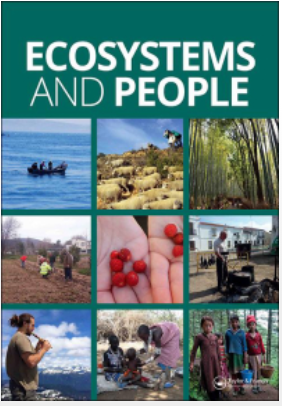Biodiversity and ecosystem services dashboards to inform landscape and urban planning: a systematic analysis of current practices
IF 3.7
Q1 Agricultural and Biological Sciences
引用次数: 0
Abstract
Guiding the transformation of cities and regions towards more sustainable pathways requires a deep understanding of the complexities of socio-ecological systems. This entails gaining insights into the status and trends of biodiversity, ecosystems and their services (BES), as well as navigating complex governance and power structures, particularly in contested spaces. Digital dashboards, understood as visual representations of key information, could effectively communicate complex BES information to decision makers and planners in landscape and urban planning, enabling more informed decisions. While dashboards are increasingly being used in spatial-related applications, the lack of scientific understanding regarding the emerging applications of BES information in dashboards underscores the pressing need for research and review in this area. This study aims to identify and analyze contemporary case studies of BES dashboard applications to explore their potential role, which can effectively support decision-making in landscape and urban planning. We develop a conceptual framework of interlinkages between BES dashboards and landscape planning processes and apply this framework to analyze 12 state-of-the-art BES dashboard applications from Asia, Australia, Europe, North and South America. Our results reflect emerging practices of dashboards visualizing BES information, which varied in purposes, content, functionalities, visual design, and output features. The dashboards represented/covered a total of 66 BES indicators, including tree health, forest status and functionality, green and blue spaces connectivity, and specific components of biodiversity. Further research on user demands and real-world impacts is necessary to enhance the effectiveness of BES dashboards in informing landscape and urban planning for people and nature.为景观和城市规划提供信息的生物多样性和生态系统服务仪表板:对当前实践的系统分析
引导城市和区域向更可持续的道路转型,需要对社会生态系统的复杂性有深刻的理解。这需要深入了解生物多样性、生态系统及其服务(BES)的现状和趋势,以及驾驭复杂的治理和权力结构,特别是在有争议的空间。数字仪表板被理解为关键信息的可视化表示,可以有效地将复杂的BES信息传达给景观和城市规划的决策者和规划者,从而做出更明智的决策。虽然仪表板越来越多地用于与空间相关的应用,但对仪表板中BES信息的新兴应用缺乏科学理解,这凸显了对该领域研究和审查的迫切需要。本研究旨在识别和分析BES仪表板应用的当代案例研究,以探索其在景观和城市规划中有效支持决策的潜在作用。我们开发了BES仪表板与景观规划流程之间相互联系的概念框架,并应用该框架分析了来自亚洲、澳大利亚、欧洲、北美和南美的12个最先进的BES仪表板应用。我们的结果反映了仪表板可视化BES信息的新兴实践,其目的、内容、功能、视觉设计和输出特性各不相同。仪表板代表/涵盖了66个BES指标,包括树木健康、森林状态和功能、绿色和蓝色空间连通性以及生物多样性的具体组成部分。为了提高BES仪表盘在为人与自然提供景观和城市规划信息方面的有效性,有必要进一步研究用户需求和现实世界的影响。
本文章由计算机程序翻译,如有差异,请以英文原文为准。
求助全文
约1分钟内获得全文
求助全文
来源期刊

Ecosystems and People
Agricultural and Biological Sciences-Ecology, Evolution, Behavior and Systematics
CiteScore
7.80
自引率
11.30%
发文量
40
审稿时长
42 weeks
期刊介绍:
Ecosystems and People is an interdisciplinary journal that addresses how biodiversity and ecosystems underpin human quality of life, and how societal activities and preferences drive changes in ecosystems. Research published in Ecosystems and People addresses human-nature relationships and social-ecological systems in a broad sense. This embraces research on biodiversity, ecosystem services, their contributions to quality of life, implications for equity and justice, and the diverse and rich ways in which people relate to nature.
 求助内容:
求助内容: 应助结果提醒方式:
应助结果提醒方式:


